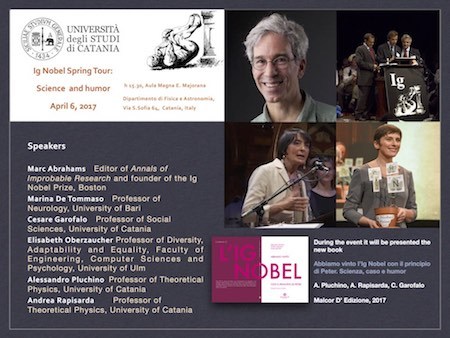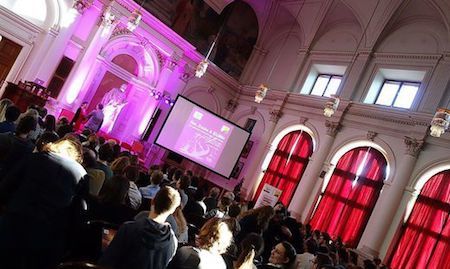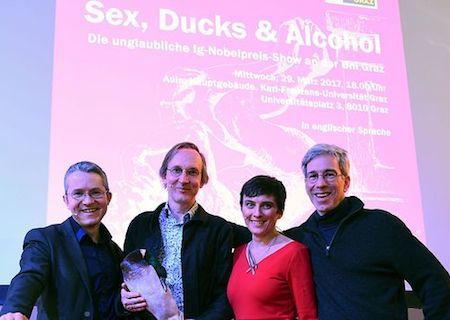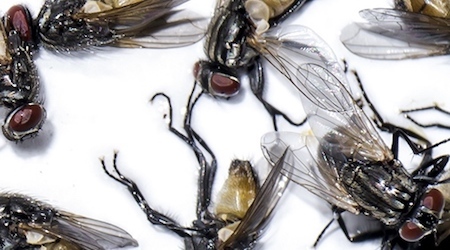Marc Abrahams's Blog, page 223
April 5, 2017
Eye-poking, fish swallowing, burnt hair and dead ducks: Ig Nobel Spring Tour ends in Rotterdam
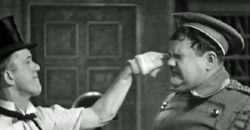
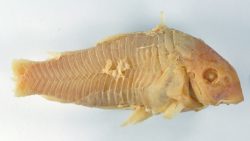 The final stop of the ‘Ig Nobel Spring Euro Tour’ is the Natural History Museum Rotterdam, the Netherlands, home of the famous ‘Dead Animal Tales’ exhibition. Saturday April 8, 2017 at 20:00h Marc Abrahams speaks about recent Ig Nobel prize winners and he introduces some Dutch improbable researchers, including:
The final stop of the ‘Ig Nobel Spring Euro Tour’ is the Natural History Museum Rotterdam, the Netherlands, home of the famous ‘Dead Animal Tales’ exhibition. Saturday April 8, 2017 at 20:00h Marc Abrahams speaks about recent Ig Nobel prize winners and he introduces some Dutch improbable researchers, including:
Lara & Richard Zegers – Eye trauma in Laurel and Hardy movies: another nice mess
Bram Langeveld – Burnt hair and colliding particles: The hunt for the CERN ‘weasel’
Erwin Kompanje & Ben van der Hoven -‘Do not swallow’: How and why a catfish and its predator ended up at the Intensive Care Unit, and in the museum
Kees Moeliker – Homosexual necrophilia in the mallard duck: what’s new?
Program starts: April 8, 2017, 20:00h (doors open at 19:30h)
Program ends: around 21:30h, followed by drinks
TICKETS: Euro 10,- including museum admission and a beverage
Reservations: make sure you have a seat, buy an e-ticket here
Address: Natural History Museum Rotterdam, Westzeedijk 345 (Museumpark), 3015 AA Rotterdam, the Netherlands

April 3, 2017
Untrained modern youths and ancient masters in self(ie) portraits
What do modern youths and ancient masters have in common? One possible commonality is they way they depict themselves in self portraits – specifically whether they tend to prefer giving preference to their left cheek or the right one.
“[…] a set of selfies and wefies by modern youths reveals comparable biases to self-portraits and portraits by master painters over the history of the visual arts. Assuming that our group of young selfie-takers had no academic training in painting, portraiture, and art history, these findings therefore support an account of posing preferences in terms of biologically determined asymmetries over an account based on culturally induced conventions.”
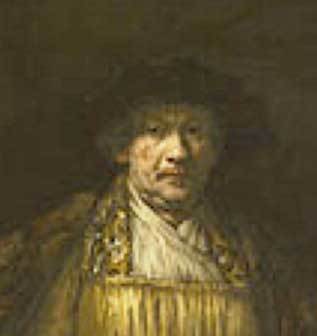 – explain a research team from the Dipartimento di Neuroscienze, Università di Parma, Italy, and the School of Psychology, University of Liverpool, UK.
– explain a research team from the Dipartimento di Neuroscienze, Università di Parma, Italy, and the School of Psychology, University of Liverpool, UK.
They make steps towards clarifying potential confusion with regard to image-reversal in smartphone cameras – as opposed to the mirrors which were often used by Old Masters for their pre-photographic selfies :-
“Because in smartphones the preview image is mirror-reversed, but the image file is saved as taken from a front camera (non-mirror-reversed), a saved image with the selfie-taker on the left signals a preference for a (mirror-reversed) preview image where the selfie-taker is on the right.”
See: Nicola Bruno, Carole Bode & Marco Bertamini (2016): Composition in portraits: Selfies and wefies reveal similar biases in untrained modern youths and ancient masters, in: Laterality: Asymmetries of Body, Brain and Cognition, 27 May 2016.
Note that mirror (and smartphone) portraits are only reversed left-right rather than up-down – a much discussed phenomenon. Here’s Richard Feynman’s take on it . . .

April 2, 2017
New book (and show!) by the Ig Nobel randomness reseachers
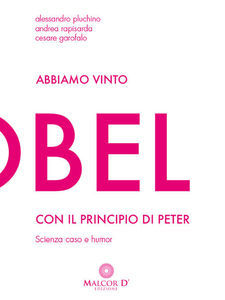 The Italian researchers who analyzed how the Peter Principle plays out, and who as a side-effect of that were awarded an Ig Nobel Prize, have a new book about their experiences. The book is called Abbiamo vinto l’Ig Nobel con il principio di Peter [“We won the Ig Nobel with the Peter Principle”], by Alessandro Pluchino, Andrea Rapisarda , and Cesare Garofalo, published by Malcor D’.
The Italian researchers who analyzed how the Peter Principle plays out, and who as a side-effect of that were awarded an Ig Nobel Prize, have a new book about their experiences. The book is called Abbiamo vinto l’Ig Nobel con il principio di Peter [“We won the Ig Nobel with the Peter Principle”], by Alessandro Pluchino, Andrea Rapisarda , and Cesare Garofalo, published by Malcor D’.
We will all celebrate the new book in a special show at the University of Catania, on Thursday, April 6. The show features: Marc Abrahams and Ig Nobel Prize winners Marina de Tommaso (measuring the relative pain people suffer while looking at an ugly painting, rather than a pretty painting, while being shot [in the hand] by a powerful laser beam), Elizabeth Oberzaucher (mathematical analysis of the man who fathered 888 children), and of course Cesare Garofalo, Alessandro Pluchino, and Andrea Rapisarda (organizations would become more efficient if they promoted people at random).
The show is a featured part of the Ig Nobel Spring EuroTour.

April 1, 2017
Eyewitness account of the Ig Nobel show in Graz
Norbert Swoboda reports about the Ig Nobel show at the University of Graz. His report, in Kleine Zeitung, begins:
From sex, ducks and alcohol
Premiere in Austria: At the University of Graz, three Ig Nobel Prize winners took part in the sold out hall on Wednesday evening.
This was part of the Ig Nobel spring Eurotour. The tour continues next week with shows in Italy and The Netherlands.
BONUS: The University of Graz prepared a highlights video from the evening.

Facts and Truth in Science and Everywhere Else
ORF radio, in Austria, interviewed me about fact and truth, a couple hours before I gave a 15-minute keynote talk about that on an ORF TV program:
Ig-Nobel: Facts and Truth in Science — “Fake News” is a term that is currently under discussion – so also last night at an event in the Radiokulturhaus. Marc Abrahams, the inventor of the Ig Nobel Prizes, was also present. Thus, scientific achievements are annually awarded which sound absurd, but are scientifically correct. What you can learn from science: never stop asking questions.
Design: Isabella Ferenci
With: Marc Abrahams, inventor of the Ig Nobel Prizes
You can listen to an edited version of the radio interview, in mixed English and German.

Hells Angels Trademark Law Fetishism Investigation
Trademark law, the Hells Angels motorcycle club, and fetishism rendezvous in a single academic study:
“Hells Angels™ Motorcycle Corporation in the Fashion Business: Interrogating the Fetishism of the Trademark Law,” Tereza Kuldova, Journal of Design History, epub 2016. The author, at the University of Oslo, explains:
“This article investigates the social function and underlying logic of trademark law by using the unique and unconventional example of self-proclaimed ‘outlaws’, the Hells Angels Motorcycle Club, and their paradoxical utilization of the IPR law for the protection of their reputation and ‘goodwill’ in both legal and illegal markets. Hells Angels worldwide are passionate about legally protecting their club designs, logos and insignia, as well as logos and designs relating to their legal fashion and accessories businesses with support merchandise. Analysing the example of the Hells Angels and their relationship to their club insignia, it is revealed that the trademarked logos clearly function as fetishes in the anthropological sense. Consequently, it is argued that the trademark law protects precisely this power of the fetish over people, rather than being a mere protection against ‘consumer confusion’ or a mark of ‘origin’. Hence, it is argued that trademark law operates on principles of magic as identified by J.G. Frazer and thus belongs to a magico-legal realm rather than a realm of purely rational law as the legal discipline would like to argue. The power of designed logos is at the crux of the argument.”
Here is a copy of a legal notice the Hells Angels Motorcycle Club has affixed to the bottom of its web site:
(Thanks to Oliver Lehman for bringing this to our attention.)

March 30, 2017
Dangerous infectious diseases : good news for Wall Street?
“In this research, we show that large events of devastating nature to the economy can be considered as good news to some interest groups, such as stock market traders.”
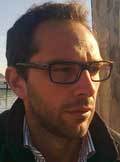 – explain researchers Michael Donadelli [pictured], Renatas Kizys and Max Riedel in a new paper for the Journal of Financial Markets. In this case. the ‘large events of devastating nature’ are related to outbreaks of dangerous infectious diseases – which the team examine via correlations in Disease Related News items (DRNs) and stock market performance. They find that though outbreaks of dangerous infectious diseases are no doubt very bad news for some sections of society, for others, they can be seen as “exploitable investment opportunities” :
– explain researchers Michael Donadelli [pictured], Renatas Kizys and Max Riedel in a new paper for the Journal of Financial Markets. In this case. the ‘large events of devastating nature’ are related to outbreaks of dangerous infectious diseases – which the team examine via correlations in Disease Related News items (DRNs) and stock market performance. They find that though outbreaks of dangerous infectious diseases are no doubt very bad news for some sections of society, for others, they can be seen as “exploitable investment opportunities” :
“We find that DRNs have a positive and significant sentiment effect among investors (on Wall Street).”
They hypothesize that the stock market opportunities might, for example, be related to vaccine development by pharmaceutical firms.
“Our findings are of utmost importance and practical usefulness for institutional and individual investors, portfolio managers, financial analysts, and pharmaceutical firms. Indeed, we identify a range of exploitable investment opportunities.”
see ‘Dangerous infectious diseases : Bad news for Main Street, good news for Wall Street?’

March 28, 2017
The Librarian is No Longer a Loveless Frump, Data Suggest
Librarians of today may benefit from this re-analysis of old data:
“Loveless Frump as Hip and Sexy Party Girl: A Reevaluation of the Old-Maid Stereotype,” Katherine C. Adams, The Library Quarterly, Volume 70, Number 3 | Jul., 2000.
“As computer technology prompts educators and practitioners within Library and Information Science (LIS) to redefine their profession, the old-maid stereotype has yet again become a topic of debate. Previous analyses of the old-maid stereotype have failed to expose how stereotypes work to create meaning at both the point of production and consumption. Without such an understanding, attempts at overcoming the stereotype by willing it away, renaming, or ignoring it will remain futile. Recent poststructural theories, though, allow librarians to understand both the durability and inherent discursive weaknesses in the stereotype and, hence, provide the basis of a more informed strategy for overcoming it. Moreover, the shriveled-prune representation may be part of the fun of being a librarian. This stereotype allows knowledge workers and information managers the opportunity to retain a distinct identity as librarians.”
BONUS: “A Whole New World of Freaks and Geeks: Libraries and Librarians on YouTube”

March 27, 2017
Why Lawyers Are Nice (or Nasty)
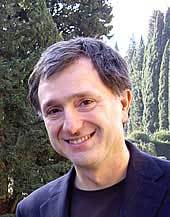 Which might be the best strategies for lawyers to maximize success – should they be honest or dishonest (and/or aggressive or passive) ? Researchers Giovanni Sartor, EUI – Florence [pictured] Michel Rudnianski, CNAM/ORT – Paris, Antonino Rotolo, CIRSFID – Bologna, Régis Riveret, University of Aberdeen, and Eunate Mayor, EUI – Florence, offer solutions in their EUI Working Paper LAW2009/08 ‘Why Lawyers Are Nice (or Nasty) : A Game-Theoretical Argumentation Exercise’
Which might be the best strategies for lawyers to maximize success – should they be honest or dishonest (and/or aggressive or passive) ? Researchers Giovanni Sartor, EUI – Florence [pictured] Michel Rudnianski, CNAM/ORT – Paris, Antonino Rotolo, CIRSFID – Bologna, Régis Riveret, University of Aberdeen, and Eunate Mayor, EUI – Florence, offer solutions in their EUI Working Paper LAW2009/08 ‘Why Lawyers Are Nice (or Nasty) : A Game-Theoretical Argumentation Exercise’
Applying Professor Dung’s Abstract Argumentation Framework (see: P. M. Dung. ‘On the acceptability of arguments and its fundamental role in nonmonotonic reasoning, logic programming, and n–person games.’ Artificial Intelligence, 77:321–57, 1995) the team are able to determine that : –
“[…] given certain hypotheses concerning the costs of proceeding, the most successful posture for a lawyer is to be non-honest and non-aggressive, followed by being honest and aggressive, then by being honest and non-aggressive, and finally by being non-honest and aggressive. In other words, given that framework, being non-honest pays only when one is non-aggressive, while aggressiveness only pays when coupled with honesty.”
Also see; The pleasure of being nasty.

March 26, 2017
Dead flies, psychopathic night owls, and blinking humans — in Stockholm on Monday
Dead flies, psychopathic night owls, and blinking humans — these things and more will be part of the Ig Nobel shows in Sweden.
WHEN: Monday, 27 March, 2017,
WHERE: Stockholm, Sweden:
There will be three (3) events— all on the same day:
STOCKHOLM UNIVERSITY , Stockholm, Sweden, at Studenthuset, in the Galleriet — Monday, March 27, 11:30 am. — This event at Stockholm University will be live-streamed on Facebook.
KAROLINSKA INSTITUTE , Stockholm, Sweden, in Lecture hall Retzius — Monday, March 27, 3:00 pm.
FRI TANKE FÖRLAG , Kungsgatan 60, Stockholm, Sweden — Monday, March 27, 5:30 pm.
Each event will feature:
Marc Abrahams — Father of the annual Ig Nobel Prize ceremony and editor of Annals of Improbable Research
Ig Nobel Prize winner Fredrik Sjöberg (three-volume autobiographical work about the pleasures of collecting flies that are dead, and flies that are not yet dead)
Ig Nobel Prize winner Minna Lyons (evidence that “night owls” are, on average, more self-admiring, more manipulative, and more psychopathic than people who habitually arise early in the morning)
Ig Nobel Prize winner Piers Barnes (how many group photos are needed to ensure at least one in which nobody blinks).
Here’s a preview, in the newspaper Dagens Nyheter: “Maybe I have become somewhat more rigid in cork“
This event is part of the Ig Nobel Spring Eurotour, which has already visited England, Switzerland, and Norway, and will arrive eventually in Austria, Italy, The Netherlands, and Scotland.

Marc Abrahams's Blog
- Marc Abrahams's profile
- 14 followers


